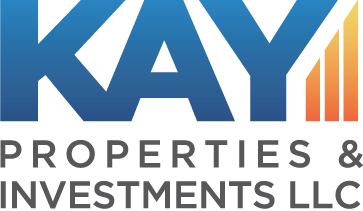You can invest in income property in a decidedly defensive way. Here are four conservative strategies to minimize risk while you pursue income and appreciation from investment real estate.
By Dwight Kay, CEO & Founder, Kay Properties & Investments, LLC
The highest profile professional real estate developers and investors are typically those who have won big or lost big — they made their names taking oversized risks that in some cases paid off handsomely and in other cases crashed and burned.
But real estate investing isn’t just for highfliers with nothing to lose. In fact, quite the opposite is true. Investors can take a decidedly defensive approach to building wealth through real estate investing, especially given the favorable tax treatment that rewards many aspects of real estate investment. (Consult your tax adviser to learn more.) To be sure, all investments carry risk, be they stocks, bonds or hard assets like real estate, but some investment strategies are less risky than others.
I’ve taken a generally conservative approach to real estate investing with much success. These strategies are hallmarks of my approach. They’ve helped mitigate the risks of real estate ownership and investment while maximizing the potential to achieve income (positive cash flow), shelter income from tax, and realize asset-value appreciation.
Tip #1: Avoid recession-prone, highly volatile real estate asset classes
Some asset types have demonstrated that they are much higher risk and recession-prone than others. These include hotel and lodging properties, senior housing in most of its forms, and real estate used in the production of oil and gas. Avoid these properties.
Hospitality, for example, has been hit hard by all three recessions since 2000. In 2010, following the Great Recession, U.S. hotels considered distressed by Real Capital Analytics approached 2,500 properties with total debt of $40 billion. Many investors in these properties never recovered even their principal — they lost everything. More recently, we’ve seen historic disruptions by the COVID-19 pandemic as travel both for business and leisure ground to a halt. (Marriott, as one example, had the worst quarter of its entire company history during the pandemic.)
Senior care is another sore spot, with senior housing, assisted living, long-term care facilities and nursing homes all subject to regulations that increase the risk and stability of owning and operating them. And that was even before the pandemic layered onto these types of properties the challenges of a particularly vulnerable population during a catastrophic public health crisis.
Also volatile are properties used for the production of oil and gas. Drilling and royalties from energy production are uncertain at best and highly volatile at worst. If an oil well doesn’t produce as expected despite the best due diligence, the underlying asset value can nosedive. Fluctuating oil prices from supply and demand shocks can have the same effect. Buyer beware.
Tip #2: Don’t load up on debt
It sounds contrarian and it is, actually, because it can be easy to borrow against real estate. People frequently do it to minimize their equity investment and load up on properties. But while many advisers tout the benefits of leverage, we tout the risk of leverage. Many of our clients don’t want to increase their risk profile, and since they’ve often already paid off properties — their homes and sometimes investment properties — they don’t want to go back into debt especially at a stage of life where they want to lower their potential risk and not increase it.
It’s understandable. Fortunately, there are no-leverage real estate investments available, including debt-free Delaware Statutory Trusts (DSTs). With the pandemic hovering all over the world and real estate subject to uncertainty and potential distress, a debt-free strategy can be attractive. One thing’s for sure: With private real estate offerings that are debt free with no long-term mortgages encumbering the property, there’s no risk of lender foreclosure.
This isn’t to say all debt is bad; it isn’t. But a defensive real estate investment strategy makes limited or no use of debt a priority in an effort to mitigate risk.
Tip #3: Don’t put all your eggs in one basket
Before the pandemic it was typical to see high-net-worth investors, acting independently, purchase their own properties. Post-pandemic, many investors have decided that the health crisis and economic headwinds are just too great for them to justify putting all their eggs in one basket — that is, a property or properties that they own solely.
It’s a timeless defensive strategy to diversify* real estate investment capital into multiple properties in multiple geographic locations in multiple asset classes and with multiple tenants. This can be accomplished easily through a range of DST, tenant-in-common (TIC) or limited liability corporation (LLC) investments, though the tax treatment of these structures is different.
Although diversification does not guarantee profits or protection against losses, many investors are realizing that it’s just as prudent to diversify their real estate portfolios as it is to diversify their stock portfolios. For example, instead of purchasing one 100-unit property in Nashville, an investor can diversify his or her capital across 5,000 multifamily units in 15 different multifamily communities in nine different states, using DSTs. Or instead of purchasing one net lease pharmacy building for $5 million, an investor can diversify his or her capital across 12 different single-tenant net lease properties consisting of pharmacies, e-commerce industrial distribution facilities, discount stores, dialysis clinics, auto parts stores and more.
Tip #4: Co-invest with others who have similar goals and appetites for risk
It’s not mutually exclusive to be a private equity real estate investor and a co-investor — you can be both at the same time. DSTs, TICs, LLCs and qualified opportunity zone funds are among the vehicles you can co-invest in alongside others with similar goals and tolerance for risk. Plus, co-investing is inherently a more defensive play than investing solo and tying up the majority of your net worth in one single asset in one single market.
At the end of the day, you can be a defensive real estate investor by taking multiple steps to mitigate risk while pursuing a real estate investing strategy with the potential to produce monthly income and long-term appreciation.
*Diversification does not guarantee profits or protect against losses.
